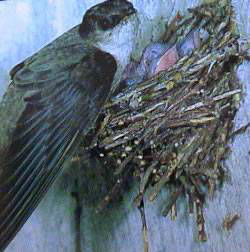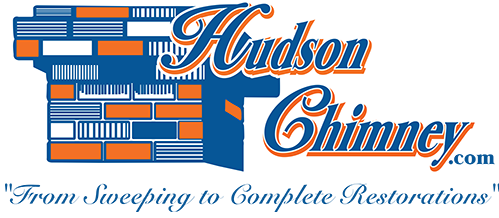by Mark Hudson | May 9, 2018 | Animals in chimney
You hear about it happening to other people, but you’ve never thought that it would happen to you. An animal has made its way into your chimney! Birds, critters, or anything that can climb on your roof could get inside your chimney. Or worst, the intruders have made your chimney their home. What do you do now? We are going to learn some of the problems that comes with animals and critters invading your chimney, and how our professionals at Hudson Chimney can help get rid of this problem or preventing it from happening in the first place.
The Problems With Animal Intrusion
If your chimney cap is missing or damaged, you may end up with a animal trying to make a nest in your flue. Once inside, they may build a nest, carrying in debris that could ignite or block the flue completely. They may also leave behind a flue obstruction that might smell so foul that it could run you out of the house. If the animal does end up leaving on its own, they could still potentially leave behind nesting materials such as feathers, fur, and even droppings.
Additionally, small mammals may climb out of a chimney using their teeth and claws, scratching and damaging your flue liner. Small scratches on the surface of the liner may not seem like a big deal, but these scratches will collect creosote and soot that continues to corrode the already damaged area. This will eventually become a hazard, which could cause major issues for your masonry and put your safety at risk.
Chimney Swifts
Critters are not the only thing that can make its way into your chimney flue. You may hear the chirping of birds from time to time. A bird may fly in and out of your chimney, or they may even move into your chimney completely! Chimney swifts are a species of bird that move into chimneys and nest in them.
In fact, chimney swifts naturally nest in hollow trees. When North America began to colonize, this eventually lead to more chimneys than hollow trees, so these birds adapted. Now they nest in chimneys, and if your chimney isn’t capped, they’ll be in yours too. Chimney swifts are federally protected under the Migratory Bird Treaty Act, and they are unlawful to be removed or harmed while staying in your chimney. You may even want us to come do a humane animal removal, but this is even unlawful for us. Chimney swifts cannot be removed or tampered with. We can only wait and hope they leave on their own, which can take up to 90 days from the time they move in and nest.
Humane Animal Removal
We believe that when it comes to your chimney, you’re better safe than sorry. If you hear an animal in your chimney (even a bird), you can call us at Hudson Chimney, and we’ll determine whether the animal can be removed or not. Our process is safe for both the chimney and the animal, and shouldn’t interfere with your home at all.
If you need to schedule an appointment for animal removal, call us at 904-282-4159 today.
by Mark Hudson | Apr 29, 2015 | Chimney Swifts
If you have ever heard chattering, fluttering, and other noises coming from your chimney as the weather gets warmer, there is a good possibility that chimney swifts have taken over your chimney as their new home. These migratory birds are named for their habit of nesting in chimneys. Once a family of chimney swifts has nested in your chimney, it is illegal to remove them. Some of our customers choose to share their chimneys with these birds every year. However, Hudson Chimney is often asked how to prevent chimney swifts from setting up their summer homes in their chimneys, and we recommend installing a chimney cap with mesh siding to keep these birds from ever entering your chimney. We would like to tell you more about chimney swifts and what you can do about them nesting in your chimney.

What exactly are chimney swifts?
According to the Driftwood Wildlife Association’s project to promote the conservation of chimney swifts, they are fascinating, adaptable birds who learned to nest and roost in chimneys when their native habitat of large hollow trees in forests of North America were cut down. The birds make their return from South America after their wintering is over, and as they are migratory, they tend to return to the same nesting area. However, if a family of chimney swifts does nest in your chimney, you should be aware that these birds are protected by the Migratory Bird Treaty Act, and removing or destroying nests with eggs or young can result in fines and penalties.
What should I do if I would like to share my chimney with chimney swifts?
On the Driftwood Wildlife Association’s website, the article “Being a Good Chimney Swift Landlord” offers invaluable tips for those who do not mind sharing their chimney with these birds. Because they do only nest during the summer season, this article recommends having your chimney swept in mid-March to have all of the creosote build-up removed. An abundance of creosote deposits makes it impossible for the chimney swifts to build their nests to the walls without danger of falling. This article also stresses the importance of chimney swifts being protected by federal law and warns against chimney sweep businesses who illegally remove chimney swift nests and eggs. Be wary of companies who advertise “bird removal,” as this is a blatant violation of state and federal laws that protect migratory birds. Instead, choose a trusted company like Hudson Chimney to perform your annual chimney sweep. Even though the noises of the baby birds chirping for food can be shrill and annoying, they will not last forever. Remember that this is only temporary, and after this short period, you will practically not even realize the chimney shifts are there. However, be sure your damper is completely closed to keep them from flying into your house.
What should I do after the chimney swifts leave in the fall?
The nests of these birds are small, cup-shaped constructions of small twigs glued to chimney walls by the saliva of the chimney swifts. Too small to be a fire hazard, you will still need to contact Hudson Chimney to remove the nest after they leave in the fall. This is needed to remove bird parasites. Additionally, as chimney swifts tend to return to the same nesting spot, you do not want them to try to use the old nest as it will be unstable and probably collapse.
What if I want to prevent these birds from nesting in my chimney?
A good quality chimney cap that is equipped with mesh screening is the best prevention against chimney swifts moving into your chimney. Hudson Chimney sells and installs a variety of different caps, and we can advise you on the best time to install your new chimney cap.
Want to know more information about chimney swifts? Contact Hudson Chimney to learn more about these birds as well as about chimney cap installation.
by Mark Hudson | Aug 22, 2013 | chimney maintenance, fire safety
What to Do When You Smell Chimney Odors
Having a chimney can be a great addition to a home but the smells they sometimes emit can be extremely unpleasant. There are many different things that may cause chimney odors, from animals living within the chimney to creosote that has built up on the chimney walls. Whatever the cause, there are a few things that every homeowner should do if they notice a strange and unpleasant odor coming from their chimney. Anything that can cause an odor can be identified with an inspection.
As soon as noticeable odors start coming from the chimney, it is important to stop using the chimney immediately. There are some causes of chimney odors, such as creosote, that can actually cause a fire hazard in addition to a smell. Until the cause of the odor has been determined, it is best to avoid the risk of a flame getting out of control by ceasing to use the fireplace at all. In many cases, the problem will have a quick fix and a fire can be enjoyed again soon.

Chimney odors can be caused by several different sources. An inspection can help you identify the problem.
The next step is to do a basic cleaning of the fireplace and the surrounding area. For example, make sure that there is not any excess ash or debris inside of the fireplace. A small amount of ash is fine for purposes of insulation, but too much can be dangerous as well as unpleasant. In addition, debris could be an indicator of what is causing the issue. For example, moisture could cause a smell but it could also cause brick and clay to fall from the chimney.
If a smell starts coming from the chimney, stop and look at what is being burned in the fireplace. Only material that is intended for the fireplace, such as coal or properly seasoned wood, should be used to make a fire. Burning other material may be the source of the smell that comes from the fireplace or chimney. Not only will it smell bad, but this could also cause potential damage to the chimney as well as a dangerous flame.
There are a few simple habits that every homeowner should establish in order to keep their chimney from producing unwanted odors. Perhaps the most important is making sure that the damper is closed when the fireplace is not in use. This prevents normal chimney odors from blowing into the house and through the air of the living space. This is a simple fix that may take care of unwanted odors for good.
If the problem is not immediately apparent or if it requires a thorough cleaning of the chimney, it is important to call a professional chimney sweep. A chimney sweep will have the tools and the know how to take care of the issue quickly, safely, and efficiently. Trying to clean the chimney can be dangerous for an inexperienced person, both because of potential animals or chemicals and because of the necessity to climb on the roof. To avoid the problem in the first place, consider having an annual cleaning by a chimney sweep.
If there is an unpleasant smell coming from the chimney, the safety of the home and everyone in it should be the first priority. Until the cause of the odor can be determined and fixed, stop using the fireplace and chimney immediately. The problem may require a simple solution, such as closing the damper, or it may be more complicated. In this case, contact a professional chimney sweep instead of attempting to make it a DIY project.


